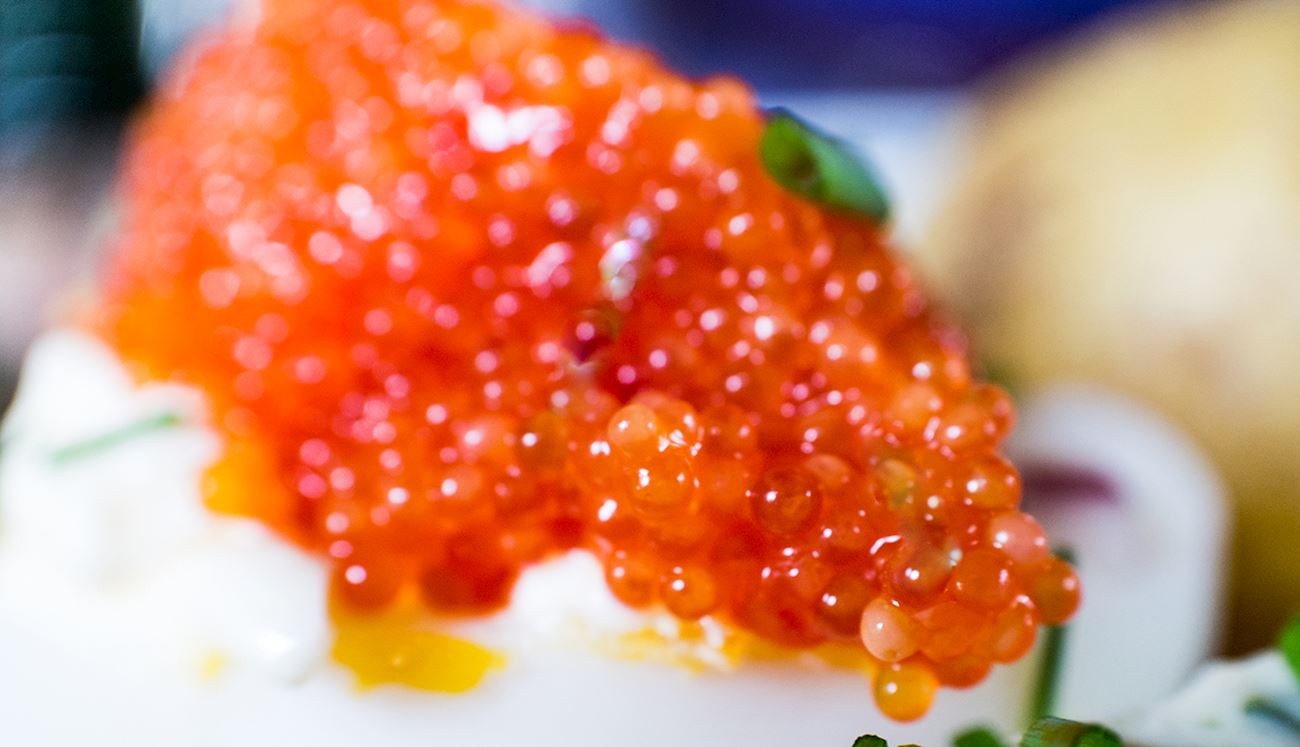Geoduck is a large, unusually shaped clam that is native to the west coast of North America, namely Pacific Northwest and Western Canadian coast. It consists of a long soft body, often referred to as a neck or siphon, which hangs from the shell, and which may reach up to 3.3 feet (1 m).
With a small foot, these clams bury themselves in the ground, and they remain at the same place for the rest of their lives. As a culinary ingredient, geoduck is an expensive delicacy. It is usually just shortly boiled before it is eaten. The shell is removed, and the skin that covers the trunk is peeled off.
Lumpfish roe is one of the more available roe varieties, and it is usually reasonably priced. It is harvested from lumpfish (Cyclopterus lumpus), which is mostly found in the cold waters of the North Atlantic. The natural color of the roe can vary, though it is usually pale gray or dusty pink.
However, most producers opt for artificial coloring to attain appealing red or black hues. The beads are small, mildly-flavored, briny, and subtly sweet. Lumpfish roe is an excellent addition to appetizers, salads, soups, or seafood-based main dishes.
White sturgeon caviar is harvested from Acipenser transmontanus—a sturgeon that is native to the west coast of North America, from the Gulf of Alaska to Baja California. Often compared to osetra, this caviar has glistening dark pearls, ranging from dark brown to black.
The beads are usually medium-sized and firm, while the flavor is clean, crisp, nutty, and buttery. White sturgeon is considered one of the most environmentally friendly caviar options, but the production and the sales are strictly regulated. This caviar is excellent served on its own, but it also pairs well with blinis, crème fraîche, seafood, and creamy sauces.
TasteAtlas food rankings are based on the ratings of the TasteAtlas audience, with a series of mechanisms that recognize real users and that ignore bot, nationalist or local patriotic ratings, and give additional value to the ratings of users that the system recognizes as knowledgeable. TasteAtlas Rankings should not be seen as the final global conclusion about food. Their purpose is to promote excellent local foods, instill pride in traditional dishes, and arouse curiosity about dishes you haven’t tried.



